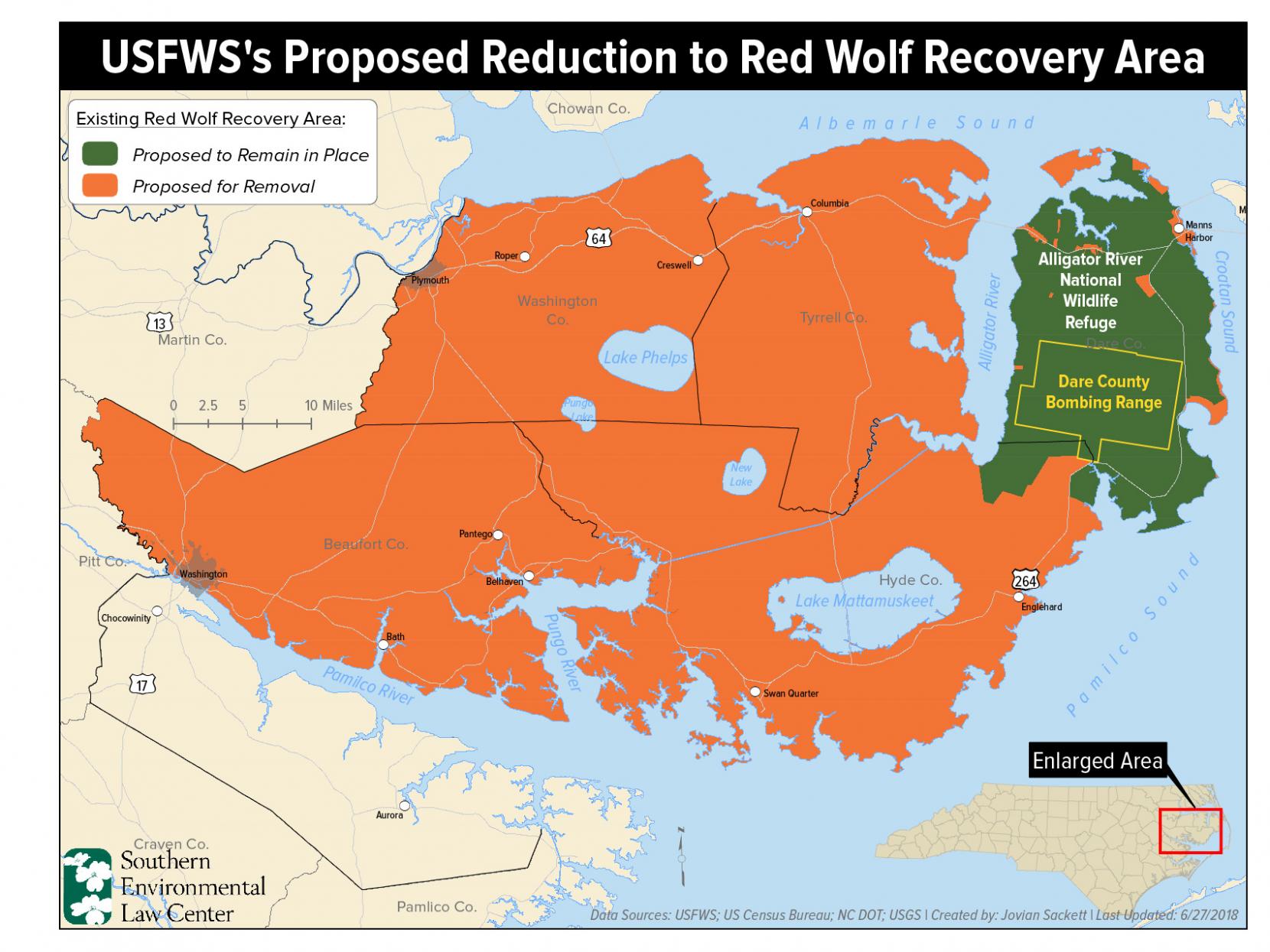Clock is ticking to save wild red wolves as species’ status confirmed
A report released today confirms the classification of red wolves as a species. The study by the National Academy of Sciences, Engineering, and Medicine reasserts what has long been reflected in the law.
“Today’s report confirms the longstanding classification of red wolves as a distinct species deserving of protection and it underscores the urgency for the U.S. Fish and Wildlife Service to act now to save the wild red wolf,” said Derb Carter, director of SELC’s North Carolina offices. “Time is running out to do what we know is required to save this species.”
In November a federal court found that the U.S. Fish and Wildlife Service violated the Endangered Species Act when it ended proven conservation measures like coyote sterilization and releases of captive red wolves and failed to respond to the ongoing decline of the species. Now, USFWS has stated that there is only one known breeding pair of red wolves left in the wild.
“Time is running out to do what we know is required to save this species.”
Senior Attorney Derb Carter, Director of SELC’s North Carolina offices
Today’s announcement was spurred by language slipped into a 2018 federal appropriations bill calling for the U.S. Fish and Wildlife Service to commission this report. The request came despite the red wolf being recognized as a distinct species warranting conservation since 1967. The agency asked the National Academies of Sciences, Engineering, and Medicine to do the analysis and an ad hoc committee was appointed to conduct an independent analysis of scientific literature regarding the taxonomy of the endangered red wolf. That committee issued today’s report.
The completion of this report has occurred at the same time as the USFWS has taken steps to roll back protections for red wolves in the wild. On November 4, the U.S. District Court for the Eastern District of North Carolina issued an order declaring that the agency violated the law in gutting protections for the endangered wild red wolves in recent years. The court also made permanent its September 29, 2016, order stopping the service from capturing and killing, and authorizing private landowners to capture and kill wild red wolves not posing a threat to human safety or property.
Conservation groups brought the federal court action over the USFWS’s decision to allow red wolves that were not causing any problems to be shot and killed by private landowners, at the same time as the agency rolled back conservation measures that had helped red wolves grow from four pairs released in 1987, to over 100 animals in eastern North Carolina from 2002-2014. Since those management changes were made, the red wolf population has plummeted over the past four years to as few as one known breeding pair of red wolves in the wild today.

Penned In
SELC is challenging a federal proposal to severely limit the range for wild red wolves.
In addition to the changes enacted in 2015, the USFWS proposed a rule in June of 2018, that would restrict wild red wolves to one National Wildlife Refuge and a bombing range in eastern North Carolina, while allowing the immediate killing of any wolves that live on or wander onto non-federal lands in what previously had been a designated five-county Red Wolf Recovery Area. The USFWS proposal would reduce the recovery area by almost 90 percent.
In 2016, a group of 30 scientists condemned such a scenario because the limited area proposed by USFWS could not support a viable population of red wolves and its proposal was inconsistent with the best available science.
SELC continues to advocate for protection of this species that is native to our region. North Carolina is home to the only wild population of red wolves in the world. Red wolves bred in captivity were successfully reintroduced on a North Carolina peninsula within their native range in the late 1980’s after red wolves were declared extinct in the wild. Once common throughout the American Southeast, intensive predator control programs and loss of habitat decimated wild red wolf populations.
